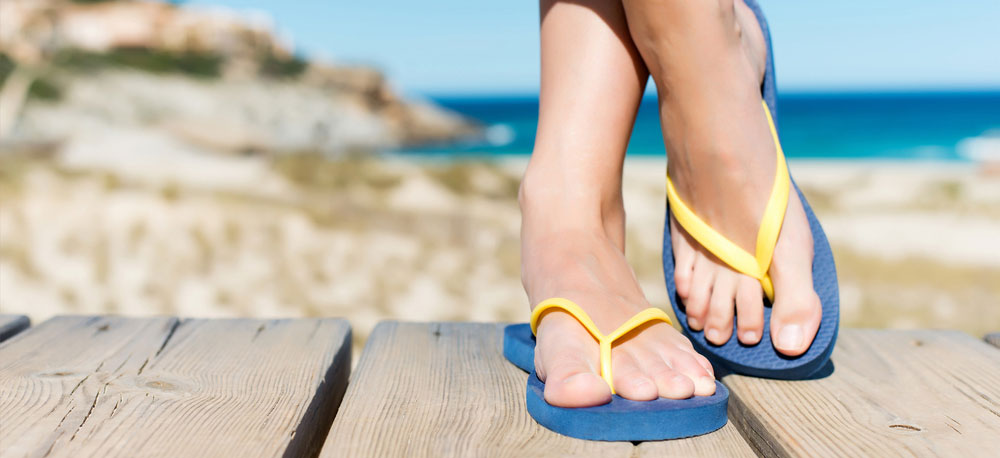
It’s that time of year when we are starting to see an increased amount of people with foot and ankle pain here in the clinic – most of which have one key factor in common…
.. A recent change in footwear!
With the heatwave we’ve been enjoying of late, it’s hard to resist the urge to break out your favourite flip flops or sliders – after all they’re quick and easy to slip on and keep your feet cool. However; wearing these types of footwear too much may soon stop you from enjoying the sun as much as you’d like.
Maybe you’ve been away on holiday for a couple of weeks, with increased walking in sandals and flip-flops. Now you’re starting to feel some discomfort on the bottom of your foot or ankle. Maybe even an existing knee, hip or lower back issue has flared up!
You see; flip flops are fine for walking along the beach but they should never be your go-to summer shoes. That is if you don’t want to be suffering later on.
The reason for this is that most ordinary flip flops offer little to no support for your foot and ankle, provide minimal cushioning, present a greater risk of trips and falls and cause you to alter the way you walk – All of which can contribute towards foot pain as well as cause issues beyond your feet as other parts of your body such as your knees, hips and lower back begin to compensate.
So how does this affect your feet?
The lack of arch support or any kind of support offered by flip flops for that matter puts added stress on the arch of your feet and inner-side of your ankles. Without this support, your plantar (the band of tissue that makes up your arch) is at an increased risk of becoming irritated and painful – leading to conditions such as plantar fasciitis and plantar heel pain.
In extreme cases the body will start to develop new bone growth to cope with these stresses. This build up is known as a heel spur and can be the cause of a lot of heel pain seen in the clinic. If worn over a period of time, prolonged flip flop use can lead to permanent changes in the structure of your feet that may have knock on effects on the rest of your body – even leading to knee, hip and back pain!!
More ‘flop’ than ‘flip’?
Another pitfall in the design of the flip flop is the very thing that gives them their name; the ‘flip’ and the ‘flop’ noise they make as you try to keep them on your feet! This causes the need to curl or claw your toes under to prevent them from flying off while you walk. This again will lead to over tightening of the tendons and tissues of the bottom of the foot and if worn enough this change in your toe appearance will become fixed in a position known as hammertoe.
Coming Up Short
With normal well supported footwear, you will naturally step from your heel to your toe through the ball of your foot. However; because of the lack of support and cushioning offered by flip flops, you will inevitably shorten your stride length in an attempt to maintain some form of stability. Taking these smaller, much shorter steps will cause you to start to strike the ground with the ball of your foot harder than usual.
People we often see who have done this experience pain and swelling in the ball of the foot known as metatarsalgia or in more serious cases it has caused a very painful inflammation around the nerves that run between the bones of the foot known as a Morton’s neuroma. This can feel as though you are constantly standing on a pebble – Ouch!
As mentioned, flip flops do have their uses and we’re not advising that you dash to throw them out just yet; But If you know you are going to be walking for more than 10mins or on harder surfaces for any length of time, then make sure you have a more cushioned, supportive shoe packed for your travels.
If you know anyone that the information in this article could help, then please feel free to pass it on and share with your family and friends.